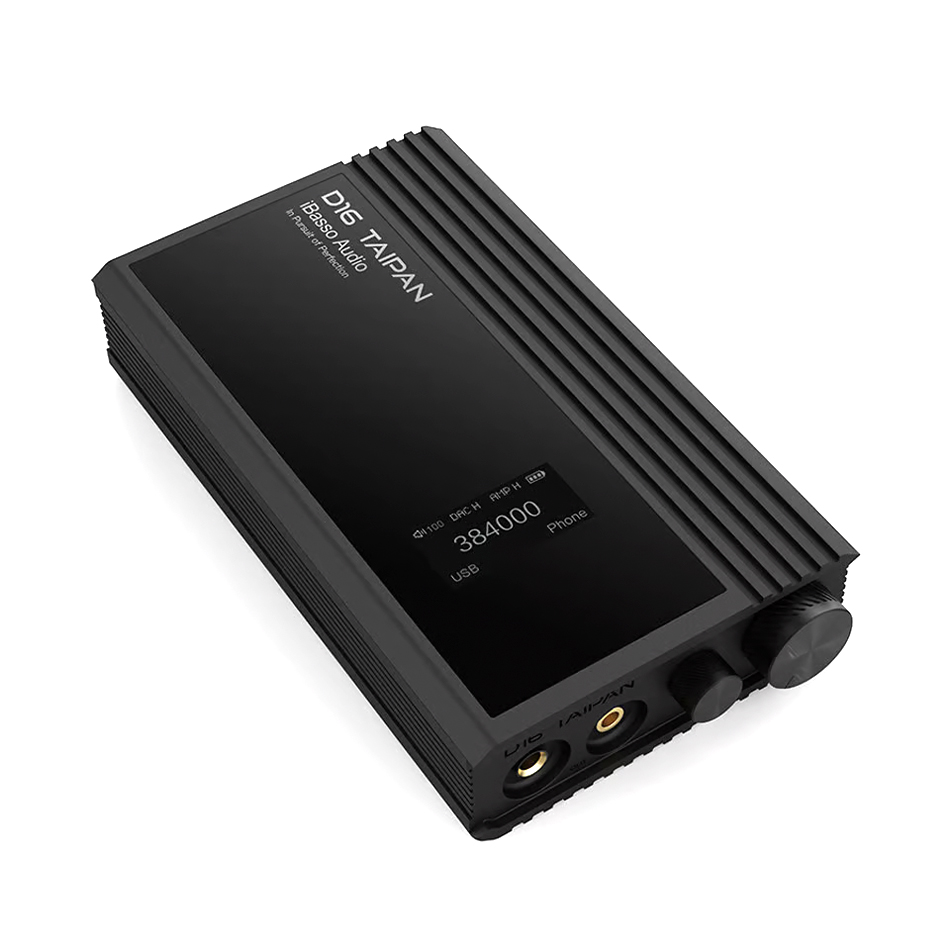A 1-Bit DAC and Portable Amp in One
iBasso has given the user two amp options in the same class to consider based on your listening and sound preferences. The D16 Taipan features a solid-state amplifier card whereas the PB5 Osprey sports a Korg NuTube amplifier card. Each one of these DAC amps will provide a different presentation to your favorite music, and the D16 Taipan will be a great option for those who like a lot of power for their headphones or IEMS and tons of detail and crispness in their sound.
The D16 Taipan is also a high-end digital-to-analog converter, utilizing iBasso’s in-house developed FPGA-Master2.0 as the core of the conversion process. It uses 16 sets of cascaded 8E PWM-DACs, with a total of 128 PWN-DACs (discrete) for 1-bit D/A conversion. The measured THD+N is superior to 0.0001%, which is the best among current portable discrete DACs on the market.
FPGA-Master 2.0 – A New Standard In Hi-Fi Conversion & Sound
The D16 implements iBasso’s newest FPGA-Master 2.0, with algorithm achievements from the last three years. It’s the reason they have been able to accomplish breakthroughts for their portable discrete DAC.
- FPGA (field programmable gate array) plays the role of signal reorganization and recoding, which generates PWM (pulse-width-modulation) signals that can be decoded by the subsequent PWM-DAC.
- DAC (digital-to-analog converter) developers know that when THD (total harmonic distortion) gets to a certain level, noise and interference get in the way of dynamic range. The more noise there is in the signal, the less room you have for dynamics. The D16’s FPGA-Master2.0 is designed with a noise-shaper that drastically lowers the noise-floor, and thus increases the dynamic range of the DAC/Amp.
- The D16 uses global clock regeneration technology. Two Accusilicon femtosecond oscillators provide a clock reference for the FPGA. Since 1-bit DACs are quite susceptible to jitter, iBasso uses Accusilicon’s audio oscillator which has a phase noise as low as -158dBc/Hz [@1kHz]. This measures far better than general femotsecond oscillators, giving the D16 a boost with jitter control over other DACs on the market.
- The D16 Taipan has picosecond-level precise delay control, which can set the I/O delay and compensate for the “wiring delay” of the board so that the signals arriving at the DAC end are aligned and strictly synchronized.
- With the precise control of FPGA-Master 2.0, 128 independent PWM-DACs operate in FIR mode and combine to form L+, L-, R+, R- outputs. Every DAC data bit undergoes careful delay and alignment.
A Discrete Pulse-Width-Modulation (PWM) DAC
The D16 Taipan utilizes a discrete PWM digital-to-analog converter. This is a popular means of implementing digital-to-analog conversion functionality in devices that don’t have an integrated DAC module. FPGA utilizes digital filtering and noise-shaping that some argue present a better and more accurate reproduction of the orginal sound.
After the FPGA generates the PWM signal, it arrives the discrete PWM-DAC for decoding. Employing 16 sets of an 8E PWM-DAC cascade. There are 4 sets per L+, L-, R+, R-, which is 32 PWM-DACs. The quantity of the DAC exceeds that of other portable discrete DACs by more than 6.4 times. With the exceptional combination of precise decoding and a substantial quantity of extremely high-quality DACs a THD+N level of less than 0.0001% is achieved and represents an exceptional performance.
Hardware Analog FIR Filter
With FPGA-Master2.0’s picosecond-level precise control, 128 independent PWM-DACs operate in FIR mode and combine to form L+, L-, R+, R- outputs. Each channel has 32 PWM-DACs operating in “delay parallel” mode. This configuration enables the 32 DACs to work together as a hardware analog FIR filter. By averaging the differences between multiple DACs, distortion is minimized, resulting in enhanced sound detail and density.
Super Class A Discrete Amplifier
The D16 Taipan DAC Amp uses a similar architecture as the popular iBasso DX320 MAX DAP Music Player, with a super Class A discrete Amplifier circuit. It incorporates 20pcs of Low VCEsat (BISS) dual transistors and boasts an impressive output current capability of up to 2A, resulting in a robust output of 1125mW + 1125mW @32Ω. It’s a remarkable amount of power for both headphones and IEMs, making it a perfect choice to bring your hi-fi on the road and power when you need it.












Reviews
There are no reviews yet.